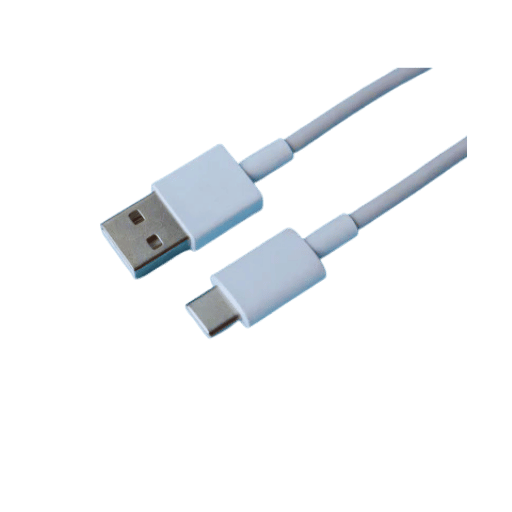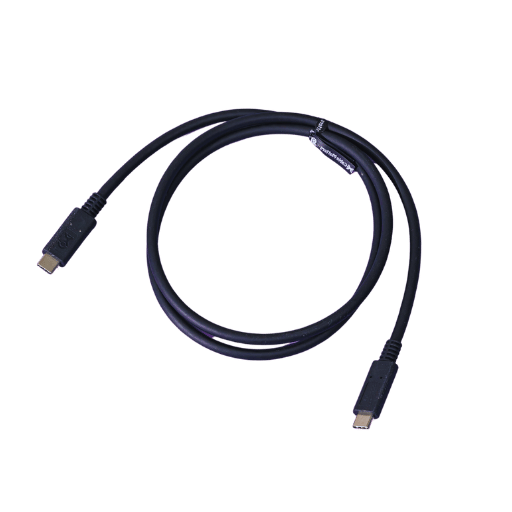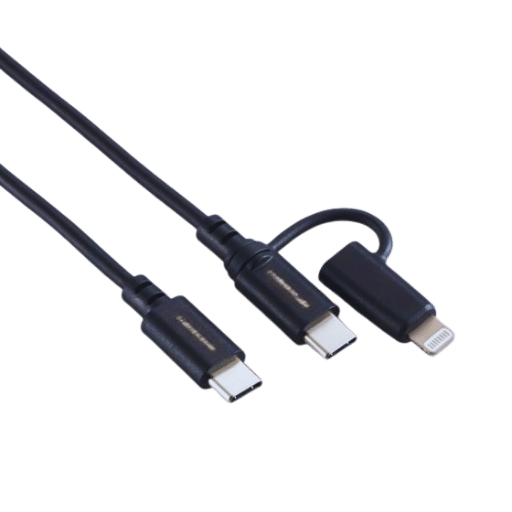Today, USB cables are one of the most crucial components of technology as they help connect devices in different fields. This informative article has been developed to explain the various types of USB cables available, what they are used for, and key technical specifications. The present article, devoted to the history and advancement of USB technology, will prepare the audience for the increasing data-transfer rates, power delivery, and compatibility issues. Whether you are a technology hobbyist or an expert wanting to consolidate device connectivity, this article aims to educate the reader on the various kinds of USB cable and their appropriate use. Such a progression will also enable the reader to grasp the requirements for the later stages of the discussion, which reveals the technological specifics of different USB standards ranging from the first generated to the most advanced – USB 4.0.

Different USB cables are manifestations of the variety of functions they serve or the compatibility they have. USB Type A is the very first and most frequently seen cable with rectangular ends and found on most computers or peripheral devices. USB Type B cables are not that common in consumer electronics but they are quite popular in connecting larger devices such as printers or scanners. On the contrary, USB Type C has become the modern standard because of its reversible design, faster data transfer rate, and better power delivery, making it ideal for more devices such as laptops, smartphones, and tablets. Each type has its specific design and offers versatility, which makes its use on certain segments more appropriate, hence underlining the need to check the right USB cable for the devices for optimal performance.
As one is thinking about various types of USBs, perhaps the most critical aspect that must be taken into account is the versions which are predominantly used at the current technological landscape. The three dominant USB components supported today are the USB Type-C, the Micro-USB, and the USB Type-A. Of the three types, the most flexible, which can cater to both power and data transfer in large quantities, is the USB type-C because it has a design that allows it to be plugged in any way. Such a design is commonly found in smartphones, laptops, and tablets. Out of all the types of USBs, Micro-USB is the most widely used but predominantly among the previous generations, where it is necessary for small devices such as Bluetooth headsets and portable speakers. As for the USB Type-A, it may not be commonly found in recent device releases, but it performs a significant function on older devices and generic USB ports. All these options help users choose what is appropriate for a particular device’s need and the corresponding level of modern technologies, especially concerning the kinds of electric wires offered.
Several key differentiators characterize USB-A and USB-C cables. First, USB-A cables are rectangular but not reversible; they must be plugged in correctly, whereas USB-C cables are used for more up-to-date applications. Their versions range from USB 1.0 to USB 3.1, and their use is mostly connecting peripherals like keyboards and mice. On the other hand, USB-C cables are more minor, oval-shaped, and have a fully reversible design, which makes plugging them in easier. They also allow the transfer of more significant amounts of data, up to USB 4, and deliver more power, facilitating charging larger devices such as laptops. Moreover, USB-C includes Thunderbolt 3, which allows faster data transfers and enables higher power delivery. These differences illustrate the movement towards USB-C to enhance performance and ease of integration with other contemporary processes.
The transfer speed of data through USB cables depends on the specific versions and the latest technology incorporated in the cables. One of the older USB versions is USB 2.0, which has a maximum data transfer speed of 480 Mbps, which is not very useful for data-intensive purposes. In contrast, USB 3.0 transfers up to 5 Gbps and USB 3.1 up to 10 Gbps. The latest generation, USB type C, supersedes all mentioned, with transfer speeds up to 40 Gbps. As for USB-C cables enabled to sustain such upgraded versions, they improve the data transfer rate and the data signaling rate as full-duplex connections allow for data from and to be received at the same time. Thus, choosing the right cable for dissimilar devices would help use modern standards’ full capabilities to attain the optimum data transfer performance.

USB type C has clear advantages over other types of cables. First, its dual orientation is efficient, as it resolves the issue of inserting the plug with the wrong orientation. It provides a greater power delivery, allowing for fast charging of smartphones and other devices like laptops. In addition, it has higher data transfer throughput, especially with USB 3.1, USB 3.2, and USB 4 support, which provides the necessary efficiency tackled by demanding applications. This range of capabilities, along with a wide range of compatible devices and support of technologies like Thunderbolt 3, makes USB type C perfect for charging and data transfer.
In my exploration of devices as reversible connectors or use of reversible connectors I found out that there is a great efficiency and convenience that is brought in. First of all, the standardization and symmetrical shape of the USB Type C plug makes it impossible to insert it the wrong way around, greatly facilitating the connection of the devices. This is especially useful in cases where the turnaround time is moderate to less. Reversible connectors also improve the device lifespan as connectors wear out with multiple insertions. In addition, the extensive availability of these connectors ensures that the devices are not rendered obsolete by new devices and peripherals. Hence, the reversible connectors improve the usability and enhance the lifetime of the devices in this rapidly changing time.
Drawing from what I researched through the different informative websites, it is reasonable to state that the USB-C is better than the USB-A cables in terms of efficiency for many reasons, including the fact that they are the new generation charging cables. To begin with, USB-C also has much greater potential – with USB 3.1, it can reach up to 10 Gbps of data transfer rate, and much more with USB 4, whilst USB-A rather reaches a maximum of 5 Gbps with USB 3.0. Moreover, USB-C comes with the advantage of providing a higher power delivery, allowing quicker charging of a range of devices – thus improving efficiency in their use. The symmetric shape of a USB Type-C plug further increases its usability to orientation – any orientation error is removed, further improving its usability. Last but not least, its use with newer devices, as well as its features such as those for alternative modes like HDMI and Thunderbolt, makes it a better option than the USB-A.

Cable length plays a significant role in the charging efficiency of USB-C connections. Longer cables tend to encounter more excellent electrical resistance, which can decrease power transfer efficiency. This results in slower charging times for devices than shorter cables, which have lower resistance. Additionally, voltage drop becomes more pronounced with increasing cable length, potentially affecting the device’s charging performance. Therefore, for optimal charging speeds and efficiency, using the shortest cable that satisfies the necessary connection requirements is recommended.
Users should consider that they sometimes use USB-C charging utilities that come with cables already attached to the power adapter. In such cases, the length of the cable matters since longer cables increase electrical resistance and, thus, decrease the power transmission efficiency. This results in the charging time being longer for longer cables than for shorter cables with less resistance. However, another reason cable length matters is that voltage drop increases with the increase in the cable size, which affects the device’s charging performance. Thus, in cases where fast charging is a priority, it is best to use the shortest cable that meets the specific requirements.
When one needs to choose the charging cable relevant to the device, one must pay attention to several factors to avoid inconvenience. As highlighted, first confirm your device’s power specifications to the cable’s power delivery capabilities. For example, high-wattage devices such as laptops usually come with wires that can handle up to 100 wall watts. In addition, the cable length should be considered; for instance, longer cables are more convenient, but shorter cables also allow efficient charging since resistance in the conductor is less. Finally, the cable manufacturer has to be well known, and standard USB-C practices must be followed to maintain the performance and safety of the device since there are stringent requirements for these cables. By looking into these parameters, one can pick a charging cable that not only gains compatibility with its intended use but also improves the charging efficacy of the device.

Here are some best practices to consider to ensure that your USB-C cables will last. To begin with, do not bend or twist the cable sharply, as this tends to break the wires placed inside. Instead, try to make gentle loops, and when coiling the cable, do not apply too much tension. Secondly, the cable’s connectors should be free of dust and debris to allow the best connection and reduce wear. It is also essential to keep the cable away from the sun and heat since extreme temperatures will only make the materials brittle. Use the cable according to the specifications provided by the manufacturer to prevent overloading and other damage. Following these simple guidelines can help increase the life and efficiency of your USB-C cable.
A common problem is using uncertified or cheap USB cables that can create hazardous situations or simply not work effectively. Always choose cables that have been certified and are made by trusted manufacturers to avoid any risk. Another typical concern is connector misuse when users try to connect the cable to the port, causing damage to the cable as well as the device. In such an instance, do not insert the connector into the port unless it is properly oriented to its configuration. Further, poor cable management, like looping the cables excessively tight or creasing the cables at corners, also reduces efficiency. Drape the cables loosely and place them in circular styles instead. These are some of the mistakes that should be avoided so that the USB cables can be used properly and safely.
To avoid damage to the USB-C cables and guarantee their working capability, it is pretty essential to store them properly. First, avoid wrapping the cables tightly, as it will stress the internal wires, which may break over time. Rather, coil their length to allow them to be loosely coiled using the “over-under” method that will minimize tension and tangling. Secondly, the stored area of the cable should be kept away from high temperatures and exposure to sunlight, as well as humidity, since they may weaken the material of the cable. It is best to keep the temperature consistent in the controlled environment of the wires. Lastly, cable organizers or pouches can be beneficial as they enable the cables to be in the right place to prevent them from accidental pulls or yanks that may lead the connectors to be damaged. Following these guidelines, based on current best practices available online, can help enhance the valuable life of USB-C cables.

The need for a USB-C to USB-A adapter will depend on the compatibility of the device and connectivity requirements. Due to their size and higher performance, it is becoming common to see USB-C ports in newer smartphones or laptops, which are more functional than older USB-A ports. However, many periphery devices still use USB-A connectors. In short, a USB-C to USB-A adapter is an imperative device that allows plugging many USB-A peripherals, such as keyboards or external hard drives, into the latest computers with only USB-C ports. Additionally, the adapter enables the wide use of electric cables for data transfer and power charging among devices without delays or power loss. An adapter allows one cable to connect to various devices, making a complex connection simple and improving the compatibility and interaction of devices without losing support for older devices.
Compatibility issues emerge mostly from various USB connector technologies’ shape and design differences. Besides being the latest in technology, USB-C also supports USB 3.1 and USB 4, which are advanced in speed and power capabilities. Nonetheless, many devices still rely on USB-A or micro-USB connectors, making connectivity a potential issue without using a specific adapter. However, data from various sources on the internet indicate that adopting USB-C itself does solve the problem since there is only one port needed for almost all devices. However, retrofitting is still required for older devices. Device and cable specifications should be checked for compatibility, especially for USB C cables and USB C ports. In addition, buying adapters that are intended for data and charging transfer can reduce the chances of connectivity issues and device performance.
One essential yet influential thing you must consider regarding the adapters is their quality. A suitable adapter, which most of us buy at least once in our lifetime, is a product that comes from reputable brands, which ensures that the data transfer and power supply the adapter provides would match the requirements of the devices it is connected to. On the other hand, connecting to a low-quality or non-certified adapter will become a bottleneck, and the data transfer and charge power will be less than expected. This would cause the devices to be less effective, take longer to charge up, and risk data transfer to errors. Also, compatibility of the adapter with the USB standard – the so-called usb power delivery – for example, usb 3.1 or usb 4, as mismatched standards would invariably affect the performance. Finally, it would be wise to spend money on adapters with the required specifications regarding speed and power output to avoid issues with device functions, as suggested by reputable websites.

A: USB C is the most recent USB connector type, and it has more benefits than its predecessors. It is a reversible connector, which means it can be plugged in any way. It also supports higher data rates of up to 40 gigabytes per second. Since the cables can transfer large quantities of power, USB C connectors can be used to charge laptops and other devices that require a great quantity of power.
A: USB C cables have many advantages, such as being faster data transfer cables, having greater power delivery capabilities of about 100W, and being flexible. Several protocols, including Thunderbolt and DisplayPort, can be used, and hence, it is much easier to connect devices such as MacBook Pros and Samsung Galaxy smartphones to external screens or other accessories.
A: USB C cables have brought about what can be termed an evolution in power cables. They offer a combination of power and data for a device at the same time. A USB C cable can perform the dual function of charging a device and transferring necessary files or data. It can also operate with greater transfer power, enabling the charging of laptops and other devices that consume so much energy.
A: USB C is a connector type, whereas USB 3 is a standard for data transfer. USB C connectors can be used with devices supporting different USB standards: USB 3.0, 3.1, or 3.2, with a maximum speed of 20 Gbps. Cables designed under USB 3 standards would typically have USB-A or B-type connectors and have a maximum speed of 5 Gbps (USB 3.0) or 10 Gbps (USB 3.1).
A: Yes, quite a few laptops and some monitors can be charged through a USB-C cable. Such capabilities are possible once again due to the USB Power Delivery (PD) specification, which allows USB C cables to support up to 100W of power. Devices and cables supporting those power specifications are a requirement.
A: Definitely no. There are performance differences between the USB C cables. The major differences may lie in data transfer rates, power delivery capabilities, and supported protocols. For example, some USB C cables support only USB 2.0 speeds, whereas others can transfer data at a speed of 40 Gbps. It is best to refer to the cable’s specification in advance before making such queries.
Q: What connection do the screened cables have with USB C cables?
A: Shielded or screened cables are manufactured to provide lesser EMI for signal transmission. Many good cable manufacturers use USB C cables and provide screening to transmit reliable signals through high-speed USB C connections with minimal signal loss. Cables with many beltings especially have these advantages, where the data transfer rates are very high, or lengths are long.
A: Yes, it is possible to connect USB C cables to older devices, but you will need adapters or cables with different connectors. For instance, USB-C to USB-A cables or adapters permit the connection of USB-C devices to computers or chargers with USB-A ports. However, the use of these adapters may limit some of the advantages that come with using USB C.